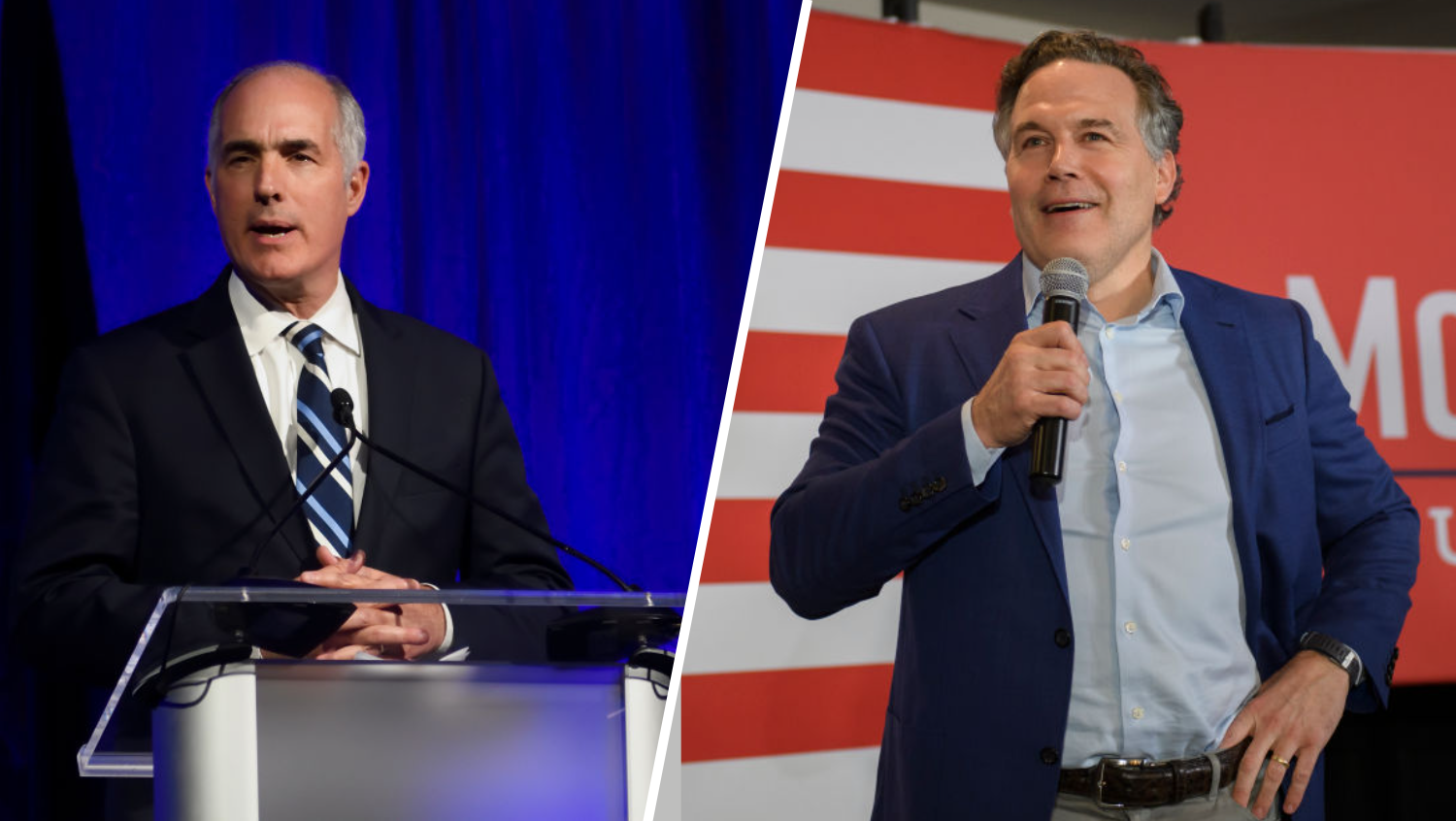During his 2008 inaugural address, Mayor Michael Nutter set a lofty goal: make Philadelphia the greenest city in America.
The next year, the Office of Sustainability he created published a plan, "Greenworks Philadelphia," setting 14 energy and environmental targets in an effort to meet that goal by 2015.
Did he do it?
Not exactly. But Philadelphia is actually closer than you might think to being America's 'greenest city'.
'Greenest City'
There is no national ranking of 'greenness', no repeated, reliable report that compares how different cities stack up when it comes to sustainability. There are hundreds of possible factors to be measured, thousands of different ways to crunch the numbers. Naming any city the 'greenest' with any degree of authority is impossible. The city's head of sustainability won't even do it.
"We think that there are a lot of cities that are doing great work that have seen progress in a number of areas," said Katherine Gajeweski.
Local
Breaking news and the stories that matter to your neighborhood.
"We certainly think we're at the top of the pack, but to say definitively, it's hard to say."
Perhaps surprising, to Philadelphians more than anyone else, however, is how many national experts outside of the city agree: It may be impossible to name a 'greenest' city, but Philadelphia is at least somewhere in the leader's pack.
"Traditionally people wouldn't have thought of Philadelphia as one of the greenest cities in the country, you would have traditionally thought of a city like Portland or Seattle," said Cliff Majersik, head of the Washington, D.C.,- based Institute for Market Transformation. "But I think that under Mayor Nutter's leadership, Philadelphia is becoming one of the greenest cities in the country."
Philly ahead on building efficiency policies and green storm water management
It's easy to see Philadelphia as an old, East Coast industrial hub, with brown fields, a large refinery, and sidewalks so cluttered with litter they earned the city the nickname 'Philthadelphia'.
But according to Majersik, looks can be deceiving. Philadelphia was one of the first cities to require building owners to report energy usage, a measure designed to drive investment in efficiency.
"So many of the things that make a city green or not green are not immediately visible. You can look at a building and you can't tell just from looking at it whether it's an energy hog or a highly efficient building," Majersik said. "To an untrained eye, you wouldn't even notice."
Another piece of largely invisible sustainability infrastructure: improvements to sewage and storm water systems, the crown jewel of the city's sustainability portfolio. They're touted by Penn professor, Nutter administration alum and author of the 2009 'Greenworks' plan Mark Alan Hughes.
"The main genius of Philadelphia's approach to storm water management is that it completely changes what the definition of the problem is," Hughes said.
Instead of figuring out how to treat more rain water to prevent dirty storm water from running into rivers, a fix that would require building more pipes and water treatment facilities, the city is now preventing run-off in the first place with 'green infrastructure,' including porous pavement and rain barrels.
Philly still lags behind West Coast sustainability darlings in 'green city' rankings, but Hughes argues that is more a matter of public opinion than actual policy.
"One of the things that tends to happen with the rankings is that we conflate sustainability with hipsterism," Hughes said.
Philly may be behind the West Coast when it comes to DIY hipster cred, "but in terms of all of these kinds of fundamentals, Philadelphia is actually totally showing up."
How does Philly stack up?
Philly ranked 13 out of 27 major U.S. and Canadian cities in the 2011 'Green City Index', by Siemens and the Economist Intelligence Unit, the most comprehensive green city ranking I could find.
For a more recent snapshot, I picked a random cross-section of sustainability metrics to see how Philadelphia compares to other large cities.
Green Space
Philadelphia is 13 percent parkland, which puts it in the top third of the 100 most populous cities, according to a 2012 report from The Trust for Public Land.
Greenhouse Gas Emissions
Philadelphia had the fourth-lowest greenhouse gas emissions per capita of the 14 cities that were profiled in the American Council for an Energy-Efficient Economy 2013 scorecard, which used voluntary, self-reported data.
Citywide greenhouse gas emissions per capita were 9.9 metric tons in 2010.
Transportation
About 38 percent of Philadelphians biked, walked, or rode public transit to work in 2013, the fifth highest rate in the 60 biggest U.S. cities. That's up about two percent since 2012, according to census data.
The number of bike commuters increased by 51 percent during Nutter's tenure, and cold temperatures and slushy roads this winter aren't scaring them all away.
"There's many more people bicycling now in the winter than there were 10, 20 years ago that were bicycling during the summer months," said Bicycle Coalition of Greater Philadelphia deputy director Sarah Clark Stewart.
On Tuesday morning, with the first real snow of the season making streets slick, there were still bikers gingerly pedaling down Spruce Street, where a buffered bike lane was added in 2009.
Marie Brown, who said her bike is her only mode of transport, stopped at the intersection of 15th Street by dragging her feet on the ground.
"In the snow I just kind of don't trust my brakes totally, so I always put my feet down," Brown laughed.
Recycling
Philadelphia reports half of municipal solid waste is recycled, higher than the national average of 34.5 percent, but lower than cities including San Diego, Seattle, and Portland, Oregon.
Though none of these statistics put Philly at the head of the pack, Mayor Michael Nutter argues he has met his inaugural sustainability goals.
Nutter points out that work on 160 of 164 initiatives in the 'Greenworks' plan is underway or complete.
"Beyond that, on anyone's measurement of Philadelphia and the issue of sustainability, Philly is going to rank significantly high," Nutter said.
Whether or not Philly ever actually earns the mantle 'greenest city,' the mayor argues landing near the top of the heap on any sustainability metric is a big step forward for the city.
"Prior to my announcing that this is the direction that we wanted to move in, had we not done many of the things that we said we were going to do and have done, you and I probably wouldn't be having this conversation, because we probably weren't in the top five or top 15," Nutter said.
City at a crossroads
In recent years, despite Philadelphia's growing green visibility, relatively limited public transport networks, high water leakage rates and low numbers of LEED–certified buildings have garnered criticism.
Looking ahead, the Clean Air Council's Joseph Minott worries Philly's goal of becoming a center of natural gas processing will wear away at its thin green patina.
"I would say that becoming a fossil fuel energy hub is inconsistent with being a truly green city," Minnot said.
In Minott's mind, the city is at a crossroads.
"We've made some really revolutionary positive changes," Minnot said. "And it seems to me, right now, we have a choice: do we want to continue down that path of sustainability or do we just want to put all of our eggs in one basket and become a hub of, essentially, dirty fuel?"
Nutter is pushing the energy hub idea, touting the jobs and manufacturing it would bring to the city. But someone else will stand in his place at the crossroads next year, when a new mayor takes office, determining the future of Philadelphia's 'green' reputation.



